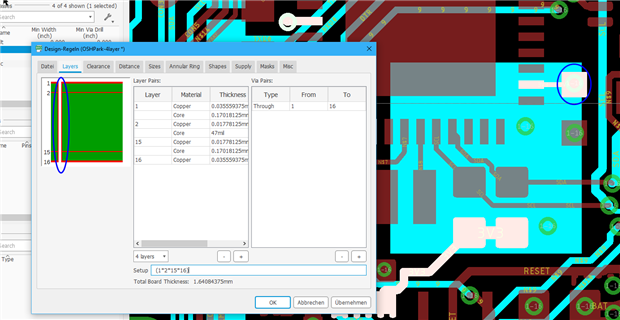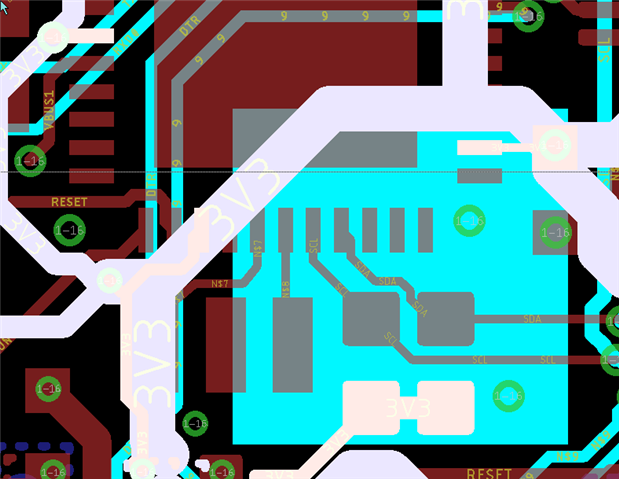Hi!
The board has a short between 3v3 and gnd and I cannot find it using drc/erc.
I have overlaps for sure. Those are mainly due to me drilling in pads. I have gone through all overlaps related to gnd and 3v3 signals.
The dru is from OSHpark and their published tolerances for a 4layer board.
Tried measuing resistance on board but maybe my multimeter is too simple to show anything. But since the board is not populated and still shorted thats a bad idea.
From a schematic perspective the 3v3 and gnd cannot be shorted since they are not connected. Has to be on the board side, right?
Trying to determine if I should go back to OSHpark or not. Got three copies and they are the same so thinking this is a design issue more than anything else.
Any ideas?




